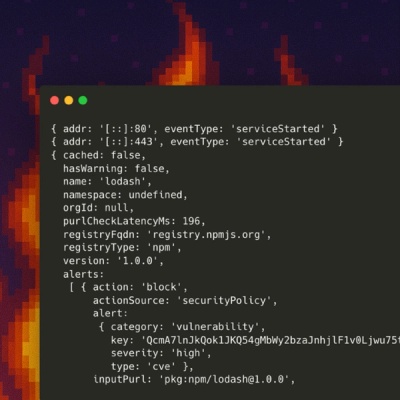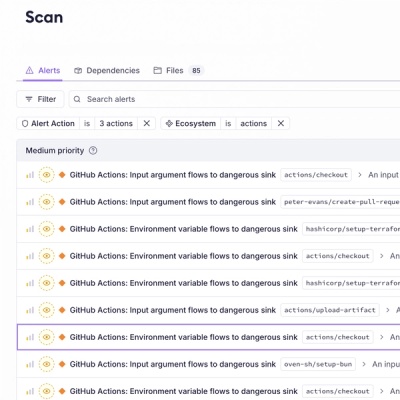
Product
Introducing Socket Firewall Enterprise: Flexible, Configurable Protection for Modern Package Ecosystems
Socket Firewall Enterprise is now available with flexible deployment, configurable policies, and expanded language support.
svg-to-vue-component
Advanced tools
When you import the .svg file as a Vue component instead of using the URL to the file, you can style it with CSS and add addtional DOM properties or event handlers to the component directly.
The differences between this project and vue-svg-loader are:
vue-loader.class and style attributes on the generated component while we support all DOM props and events.yarn add svg-to-vue-component --dev
// webpack.config.js
module.exports = {
module: {
rules: [
{
test: /\.svg$/,
// If you want to import svg in css files
// You need to configure another rule to use file-loader for that
issuer: /\.(vue|js|ts|svg)$/,
use: [
// This loader compiles .svg file to .vue file
// So we use `vue-loader` after it
'vue-loader',
'svg-to-vue-component/loader'
]
}
]
}
// ...other configurations
}
Then you can import .svg files directly and use them as Vue components:
<template>
<!-- Dom props and events are all available here -->
<CheckIcon width="20px" height="20px" @click="handleClick" />
</template>
<script>
import CheckIcon from './check-icon.svg'
export default {
components: {
CheckIcon
},
methods: {
handleClick() {
console.log('It works!')
}
}
}
</script>
In your vue.config.js:
module.exports = {
chainWebpack(config) {
// Only convert .svg files that are imported by these files as Vue component
const FILE_RE = /\.(vue|js|ts|svg)$/
// Use vue-cli's default rule for svg in non .vue .js .ts files
config.module.rule('svg').issuer(file => !FILE_RE.test(file))
// Use our loader to handle svg imported by other files
config.module
.rule('svg-component')
.test(/\.svg$/)
.issuer(file => FILE_RE.test(file))
.use('vue')
.loader('vue-loader')
.end()
.use('svg-to-vue-component')
.loader('svg-to-vue-component/loader')
}
}
In your poi.config.js:
module.exports = {
plugins: ['svg-to-vue-component/poi'],
// Or with options for the webpack loader
plugins: [
{
resolve: 'svg-to-vue-component/nuxt',
options: {}
}
]
}
In your nuxt.config.js:
module.exports = {
modules: ['svg-to-vue-component/nuxt'],
// Or with options for the webpack loader
modules: [
['svg-to-vue-component/nuxt',
{
// ...
}
]
]
}
Pass loader options like this:
// ...
{
test: /\.svg$/,
use: [
'vue-loader',
{
loader: 'svg-to-vue-component/loader',
options: {
// ...Your options here
}
}
]
}
| Option | Description |
|---|---|
svgoConfig | Project-wise configuration for SVGO, if you want file-relative configuration, use the config file instead, supported format: .svgo.{yml,js,json}, see here for an example file. If you want to turn off SVGO entirely, pass false here. |
git checkout -b my-new-featuregit commit -am 'Add some feature'git push origin my-new-featuresvg-to-vue-component © EGOIST, Released under the MIT License.
Authored and maintained by EGOIST with help from contributors (list).
Website · GitHub @EGOIST · Twitter @_egoistlily
FAQs
Compile SVG files to Vue SFC.
We found that svg-to-vue-component demonstrated a not healthy version release cadence and project activity because the last version was released a year ago. It has 1 open source maintainer collaborating on the project.
Did you know?

Socket for GitHub automatically highlights issues in each pull request and monitors the health of all your open source dependencies. Discover the contents of your packages and block harmful activity before you install or update your dependencies.

Product
Socket Firewall Enterprise is now available with flexible deployment, configurable policies, and expanded language support.

Security News
Open source dashboard CNAPulse tracks CVE Numbering Authorities’ publishing activity, highlighting trends and transparency across the CVE ecosystem.

Product
Detect malware, unsafe data flows, and license issues in GitHub Actions with Socket’s new workflow scanning support.